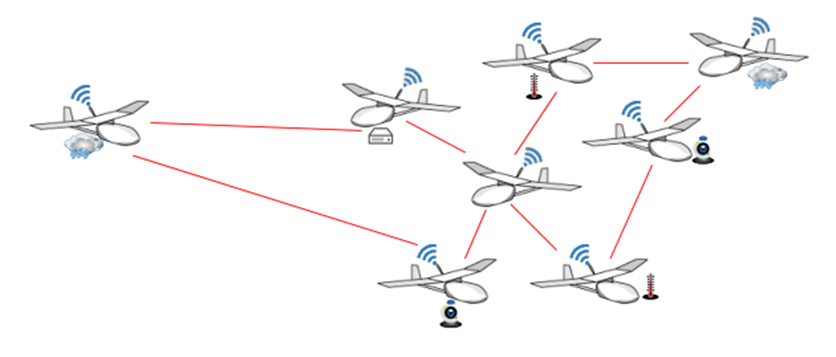Virtualization for swarms

Problem Statement:
Research on distributed applications in drone swarms benefits from simulators for various reasons. Using physical devices to form the swarm requires intensive preparatory work, and brings considerable costs. Also using physical devices makes it cumbersome to scale the number of nodes. Instead, a simulator has the potential to easily add nodes, and, to a certain extent, scale the number of nodes. Virtualization is one way to achieve this flexibility and scalability.
Tasks:
Our current digital twin for distributed applications on a robot swarm is based on a combination of a full software part and a part consisting of several single board computers, one for each node. The latter needs to be implemented in software as well to create a flexible and scalable platform for simulation. Virtual machines are needed to create a ‘routing cloud’ for the swarm to enable data exchange among the nodes. Containers suffice to run applications at each swarm node. Applications at different nodes of the swarm interact via the routing cloud.
You will build on the work of previous student groups. After studying the current state of the simulator, you will make a design for its virtualization, select a suitable hypervisor, and implement the virtualized simulator. To test the suitability of the implemented simulator for distributed applications, you will use a key management application provided by Thales Netherlands.
Work:
35% Theory, 40% implementation, simulation and demonstration, 25% writing.
Contact:
Jan Laarhuis (j.h.laarhuis@utwente.nl)
